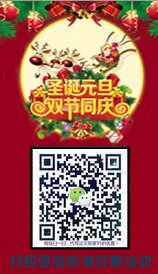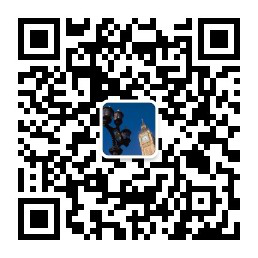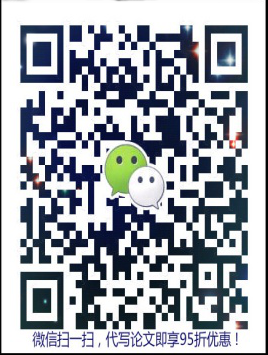联系方式
more本类最新英语论文
- 2017-12-18国际贸易与世界产量的关系 ..
- 2017-01-21国际贸易专业留学作业:外贸..
- 2016-09-02留学课程论文代写:俄罗斯加..
- 2016-02-21在美国工业服务有限公司的活..
- 2016-01-18世界贸易组织概要
- 2015-11-04international trading ess..
- 2015-05-09自由贸易在international t..
- 2015-01-30国际贸易的文化壁垒研究pap..
- 2015-01-27美国自由贸易的研究essay
- 2014-11-12加拿大留学生国际贸易经典理..
more热门文章
- 2010-12-10encommission of the europ..
- 2010-12-14关于拉丁美洲各国经济增长与..
- 2014-07-17留学生国际贸易专业毕业论文..
- 2015-05-09自由贸易在international t..
- 2011-02-04留学生国际商务管理毕业论文..
- 2014-11-12加拿大留学生国际贸易经典理..
- 2014-04-09the ways in which governm..
- 2016-09-02留学课程论文代写:俄罗斯加..
- 2014-09-23留学生国际贸易相关report
- 2011-08-29international trading论文..
more留学论文写作指导
- 2024-05-14《反论》(节选)英汉翻译实..
- 2024-05-07《湖泊的一生》(节选)英汉..
- 2024-03-31卡森•麦卡勒斯小说中..
- 2024-03-28美国黑人女性心理创伤思考—..
- 2024-03-27乔治·艾略特《织工马南》中..
- 2024-03-21超越凝视:论《看不见的人》..
- 2024-03-19《哈克贝利•费恩历险..
- 2024-03-13心灵救赎之旅——从凯利的三..
- 2024-02-22文学地理学视角下的《印度之..
- 2023-05-03英、汉名词短语之形容词修饰..
The Ways in Which Government Interfere with Free Trade and The Associated Costs and Benefits-政府干预自由贸易的方式以及相关成本与效益 [3]
论文作者:英语论文论文属性:议论文 Argument Essay登出时间:2014-04-09编辑:caribany点击率:16193
论文字数:5826论文编号:org201404081134526352语种:英语 English地区:英国价格:免费论文
关键词:Government Interfere政府干预Costs and Benefits成本和效益free trade
摘要:本文主要分析了政府干预自由贸易的好处和坏处。政府干预会造成关税壁垒,非关税壁垒,这阻碍了国家和国际自由贸易的发展。而自由贸易会促进资源的合理配置,经济发展和开放。但是政府干预在某些情况下也是需要的,不过总体而言政府干预应当弱化和改善。
Some researchers also indicate that special elements such as restrictions, conditions and trade regime in one country may to a large degree affect the effects in relation to national and international free trade. For example, before the entering WTO, Chinese government quite often use tariff quotas and differentiated criteria to control its importing certain products, some of the most needed products will be favored and given priority, while others will not be treated equally. Kokko, et al. (2001), on the basis of a cross-sectional and firm-level dataset, did the research on the factors which facilitate national and international free trade activities conducted by indigenous companies in manufacturing sector of Uruguay in 1998. A simple measurement of the presence of MNEs in manufacturing sector of Uruguay was used. The presence of MNEs in import-substituting manufacturing sectors has been distinguished from MNEs in export-orientated manufacturing sectors. It is only in export-oriented MNEs that the spillover effects have been found. The investigation demonstrates that the trade regime in manufacturing sector of Uruguay may largely influence the potential of MNEs in generating spillovers from export activities.
Rivera-Baitsand Romer (1991)believe that international free tradeis playing an important role inpromoting the technological diffusioncreation as well as transfer in manufacturing sector. They also believe that if the international exploitation of growing returns to 本论文由英语论文网提供整理,提供论文代写,英语论文代写,代写论文,代写英语论文,代写留学生论文,代写英文论文,留学生论文代写相关核心关键词搜索。
到google查找更多The Ways in Which Government Interfere with Free Trade and The Associated Costs and Benefits-政府干预自由贸易的方式以及相关成本与效益

 英国
英国 澳大利亚
澳大利亚 美国
美国 加拿大
加拿大 新西兰
新西兰 新加坡
新加坡 香港
香港 日本
日本 韩国
韩国 法国
法国 德国
德国 爱尔兰
爱尔兰 瑞士
瑞士 荷兰
荷兰 俄罗斯
俄罗斯 西班牙
西班牙 马来西亚
马来西亚 南非
南非






